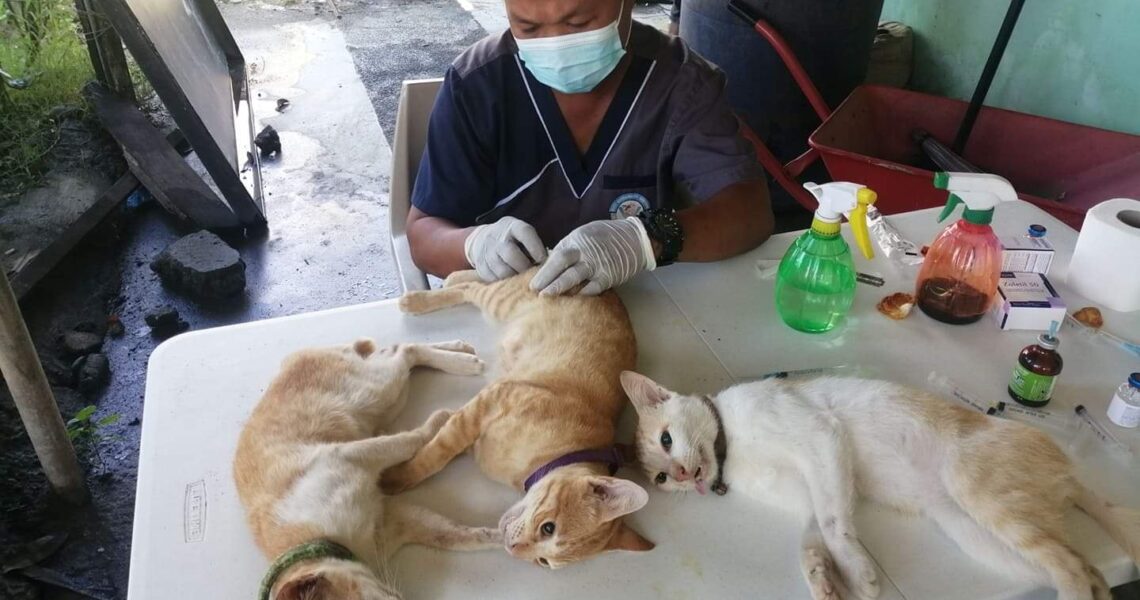Seizures in Pets
Dogs and cats can get seizures too, but they are a little different from humans. Rather than being a medical condition on its own, seizures are generally symptoms of a bigger problem. There are many things that can cause seizures: epilepsy, brain trauma, and poisoning only being a few.
Possible causes of seizures:
Eating poison
Low or high blood sugar
Liver disease and conditions
Electrolyte problems
Kidney disease
Head injury
Severe anemia
Stroke
Brain cancer
pet cat with seizure
Whole-body seizures cause your pet’s entire body to convulse. However, some seizures may be less noticeable, such as a facial tremor. They vary in duration and can last from a few seconds up to a few minutes, the latter of which should be considered a medical emergency. How can you tell if your pet is having a seizure?
Symptoms of seizures:
Running in circles, tail chasing
Suddenly dropping to the floor
Twitching
Stiffness of muscles
Fainting, suddenly falling unconscious
Drooling
Biting
Uncontrollable urinating or defecating
Standing and staring blankly
staring blankly
Episodes can go unnoticed when it is not a full body seizure. Keep an eye out for signs such as excessive thirst, tiredness or constant pacing – these types of behavior can follow a seizure.
If you are present and able to notice an incoming or occurring seizure, keep the following instructions in mind.
Time the seizure
Keep an eye on the clock throughout the duration of the seizure. If it lasts less than two minutes, everything should be okay. If the seizure goes on for two to five minutes, your dog should be taken to the vet as soon as possible. Any seizure lasting over five minutes needs to be treated by a vet immediately. If your pet experiences a seizure several times within a day, seek emergency care.
Support
Do not touch your pet
Your pet will not be clearly aware of his surroundings during a seizure. Avoid touching him as he may accidentally bite, scratch, or hurt you. Do not lift your pet to hold him in your arms. Dogs and cats cannot choke on their tongues, so it is unnecessary to put your hands anywhere near there. Only touch and move your pet if he is experiencing a seizure in an unsafe location, such as the stairs.
Remain close and observe
Your pet’s body temperature may rise abnormally the longer a seizure lasts, so you may have to cool him down by turning on a fan nearby. When the seizure has subsided, you can provide him with cool towels to place on his feet to lower his body temperature. Pay attention to your pet, as this information can be useful to your veterinarian.
Comfort your pet after a seizure
If your pet likes to be held, you can try holding him close once the seizure has ended to provide comfort. Do note that if your pet does not enjoy being wrapped up and held, this may only increase his stress.
Let your dog recover
Your pet might want to drink water and sleep after a seizure. If he is capable of standing on his own without falling over, let him do so on his own. Do not force your pet to drink water or eat. Your pet may also accidentally urinate or defecate during a seizure, so do not call your pet out if this behavior does not align with his training.
Contact your veterinarian
Immediately seek help from your veterinarian, especially if this is your pet’s first seizure or if it lasted several minutes. Your vet will want to know all the details and will conduct tests to understand what your pet’s underlying condition is. Medication might be necessary.
On that note, do remember that if your pet is given medication for seizures, always follow the instructions given to you closely. Give the medication at consistent times and be accurate with the dosage. Any inconsistencies or suddenly stopping it may only cause your pet’s condition to worsen and for more seizures to occur.
A pet experiencing a seizure is usually a sign of a bigger problem, so make sure to bring your pet to your vet so that he can receive proper treatment. Remember to stay calm, alert, and be prepared to seek help in the event that your pet experiences a seizure.

